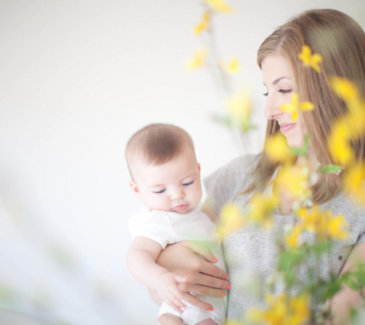It felt like the world was falling apart around me. I had just gotten home from a long day of seeing clients, and all I wanted was a shower, something to eat, and peace and quiet. Within fifteen minutes of being home my daughters were melting down. I couldn’t figure out what was going on or why they were acting the way they were. My wife said they had a great day, and I wondered what had changed. Frustrated, I went to our bedroom and started getting my shower ready.
This always happens, I thought to myself. I get home and their attitudes tank. I want to come home to peace and experience good attitudes. I want to connect with my kids and my wife. I—. A new thought popped into my head, almost as if the Holy Spirit had something to do with it. The new thought quietly whispered, “What if you are the reason everything changed? What if your energy and attitude of stress is the cause for the shift?” That stopped me in my tracks. The Holy Spirit was right. The Wonderful Counselor gently confronted my perspective and completely changed my thinking. Reflecting on that story, I am reminded we have a responsibility to guide our children to emotional wholeness—and it isn’t as complicated as you might think.
- It starts with you: Our children learn first through observation and experience. That means they develop their paradigms of mental and emotional awareness by watching us. With that in mind, ask yourself, “What are my children learning?” This is a sobering question. Are our children learning emotions are neither good nor bad but just exist? Are they learning it matters how we choose to engage our emotions? Are they learning how to walk through emotional upsets so they can learn how to develop a holistic perspective? Or are they learning to numb and avoid? Their emotional wellness, their emotional wholeness starts with us. So the best first thing you can do is explore your own emotional health and make necessary adjustments. When we adjust, the family adjusts.2.
- The importance of common language: This was a big one for our family. Speaking the same words does not mean we are speaking the same language. Language requires words to be defined. So the question becomes, “How are you defining emotional language in your home?” I could tell my daughter I am frustrated with her behavior, but she might interpret that as I am disappointed with her or I don’t like her. She then might internalize her experience and definition of my frustration, which becomes her internal narrative: “Daddy doesn’t like me.” But if I communicate my frustration with her behavior and create a common definition, then she and I have a greater chance to be on the same page and have a common framework from which to start. I can explain what my frustration is and isn’t, then help her explore her own emotional reactivity to it. Please note, this cannot be done haphazardly. It takes intentionality. It also cannot be done perfectly. You will make mistakes. Recognize them, own them, and repair them.
- Emotional expression is only the beginning: It is one thing to help our children recognize and express their emotions. However, this is only the beginning. True wholeness comes when our emotions are expressed, understood, and resolved. All emotions have duration and intensity. Some of our emotions will have greater intensity than others, and some have longer duration than others. As we work toward wholeness with our children, we need to help them become familiar with the emotion as well as the intensity and duration of that emotion. This will allow them to develop understanding, resilience, and grit.
Take some time to briefly reflect. What are your children learning by their observations and experiences with your emotions? What needs to be confronted, adjusted, or changed? How is your emotional language at home? Do you need to reevaluate your communication and stop to define terms? Finally, how are you doing in helping your children make sense of their emotional expressions? Where might you need to be more intentional?
Discipleship starts in the home, and it starts with our children. Let’s help our children toward mental, spiritual, and emotional wholeness.
This article was adapted from The Path to Wholeness by Dr. Mark Mayfield
Consider a few extra resources:



